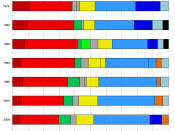To answer this question, it would be useful to start by discussing the fundamental theory of such a union, before continuing to discuss the costs and benefits of being in such a union. This will be the crux of our answer to the question, since countries are assumed to be rational actors that would act only if the benefits of joining an EMU outweighed the costs. Throughout the essay, many examples will be drawn from the EU, which is the best working example of such a union.
Definition and Theoretical Beginnings
An economic and monetary union can be defined as single market with a common currency. It involves a higher degree of integration than a currency union e.g. the Latin Monetary Union in the 1800s which did not call for a single market. The EMU may be said to be the 5th stage of economic integration according to the theory of the Hungarian economist Béla Balassa, which ranks institutions by degree of integration, the first being preferential trade areas, followed by free trade areas, customs union, common markets and then EMU; the last stage in this theory is complete economic integration.
The idea of a highly integrated economic and currency union is based on the theory of Optimal Currency Areas (OCA) that was first developed by an American economist Robert Mundell. In his theory, Mundell claims that two countries should merge their currencies if two criteria are satisfied: firstly, countries must be economically similar. In such circumstances, if they faced correlated exogenous shocks, e.g. 2 oil exporters facing the rise of oil prices, the required responses would be similar, and therefore having independent policies would be superfluous. Secondly, labour must be highly mobile between countries. For instance, if Texas tried to operate a separate monetary policy from the rest...


